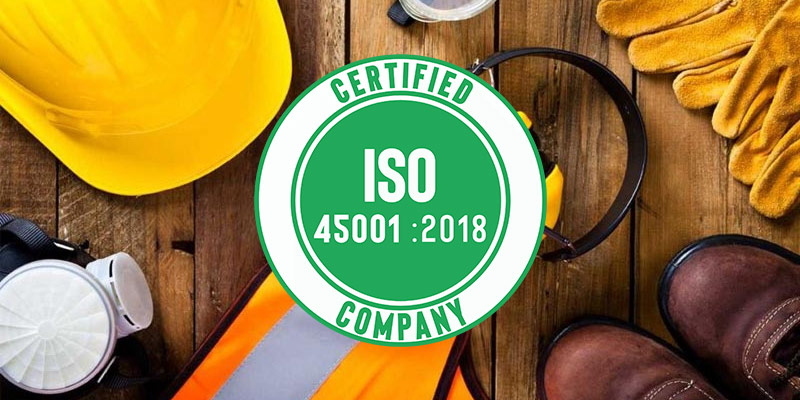
How to get ISO certification in Australia?
In the past several years, businesses are finding it increasingly difficult t...
Read MoreWhether you are a business owner, manager, or an employee, you share a common goal, that you want to work in a safe environment. Enhanced productivity arises from ensuring that people operate in work places that are transparent, secure, and trustable. Responsible practices are linked to enhanced brand reputation, throughout the operation and supply chain. Despite understanding the importance of workplace safety, many organisations do not know where to begin.
This is why the ISO 45001 standard is a boon for organisations, as it is the first international standard that deals with health and safety at work. In this article, we will describe the benefits of ISO 45001 certification and expand upon the details of ISO 45001 certification procedure.

The ISO 45001 standard offers a single, clear, comprehensive framework for all organisations that wish to improve their Occupational Health and Safety (OHS) performance. The implementation of an OHS management system allows organisations to shift from a reactive to a proactive safety culture. Fostering safety culture is widely acknowledged as the key ingredient in sustainability.
Unlike the Occupational Health and Safety Assessment Series (OHSAS) 18001 standard, the benchmark from which ISO 45001 was created, organisations are now required to proactively identify sources or situations that have the potential to cause harm. For those who want to learn more about this widely used standard, the article What is ISO 45001 can be a perfect resource.
Firstly and fore-mostly, the most obvious benefit of ISO 45001 certification is the potential to reduce workplace illnesses and injuries.
According to the International Labour Organisation, there is an enormous burden of poor working conditions leading to an estimate of 2.3 million men and women succumbing to work-related accidents or diseases every year.
The ISO 45001 standard gives your organisation the vital tools to save lives and prevent injuries. In the following, we will learn more about the benefits of ISO 45001:
Complying with the ISO 45001 standard is a way to showcase your commitment towards safety to your customers, investors, regulators and other stakeholders. When stakeholders become confident in your ability to maintain a safe work environment, they are more likely to do business with you, instead of wasting time scrutinising all your decisions.
Moreover, complying with the requirements of the standard also leads to increased productivity. The International Labour Organisation states that every year, there are 374 million non-fatal work related illnesses, leading to more than four days of absence from work. As a direct consequence of absenteeism, productivity suffers. Additionally, when serious work related injuries occur, organisations lose a lot of time replacing personnel or equipment, and due to temporary shutting down of operations.
The Occupational Health and Safety Management System (OHSMS) within the ISO 45001 standard helps organisations to identify potential safety hazards before they escalate to an accident. By addressing all potential risks within your operations, your organisation will enjoy fewer unpleasant surprises.

ISO certification procedures include four stages. In all these steps, the use of ISO consulting services is mandatory.
In order to acquire the certification, an organisation needs to begin by learning about the standard. By focusing on learning about the standard, less ambiguity is created and commitment towards change is enhanced. During this stage, organisations must learn about the requirements of the standard, what an OHSMS is, and what are the potential benefits of implementing an OHSMS.
Additionally, it is also beneficial to study about International Organization for Standardization (ISO) itself, why it creates these standards and the process of how standards are developed.
In the second stage, it is beneficial to conduct a gap analysis and perform an initial OHS review. A gap analysis allows you to highlight the discrepancies that exist between your current management system and the requirements stipulated in the ISO 45001 standard. When the focus of the gap analysis is on safety, your current safety procedures are measured against the safety requirements. In other words, ISO 45001 gap analysis systematically parses your safety program to identify gaps, weaknesses and strengths, as well as find opportunities for improvement.
In the third stage, a project plan is created to implement the recommendations of the ISO 45001 standard within your organisation, focusing on the areas of discrepancies. During this stage, it is necessary to educate your organisation so as to pre-emptively deal with the organisational resistance that comes with change. In order to engage with your employees, you must communicate the benefits of ISO 45001 to employees of all levels, going on to take their inputs at various stages. Employees feel valued whenever their feedback is incorporated into the operational activities, thereby enhancing the commitment of the entire organisation to continual improvement and occupational safety.
In the fourth stage, it is essential to design and document your OHSMS. The biggest portion of the implementation procedure is to look at your current processes and redesign them to address all the requirements of the standard. Once you have successfully modified or developed processes to meet the standard, you will need to control those processes. Documenting all OHSMS related procedures is a part of this control. Once your system is developed and documented, your employees must follow the procedures, collect data and maintain records for approximately three months.
After an initial trial period, it is necessary to conduct an audit to gauge the performance of the OHSMS. If no major nonconformities have been identified, you can achieve registration through the help of a third party accreditation body.
ISO certification gives your organisation a competitive edge. By helping you increase operational efficiency and overall product consistency, your business credibility and authority will soar to new heights.

Copyright © 2022 The ISO Council | Privacy Policy